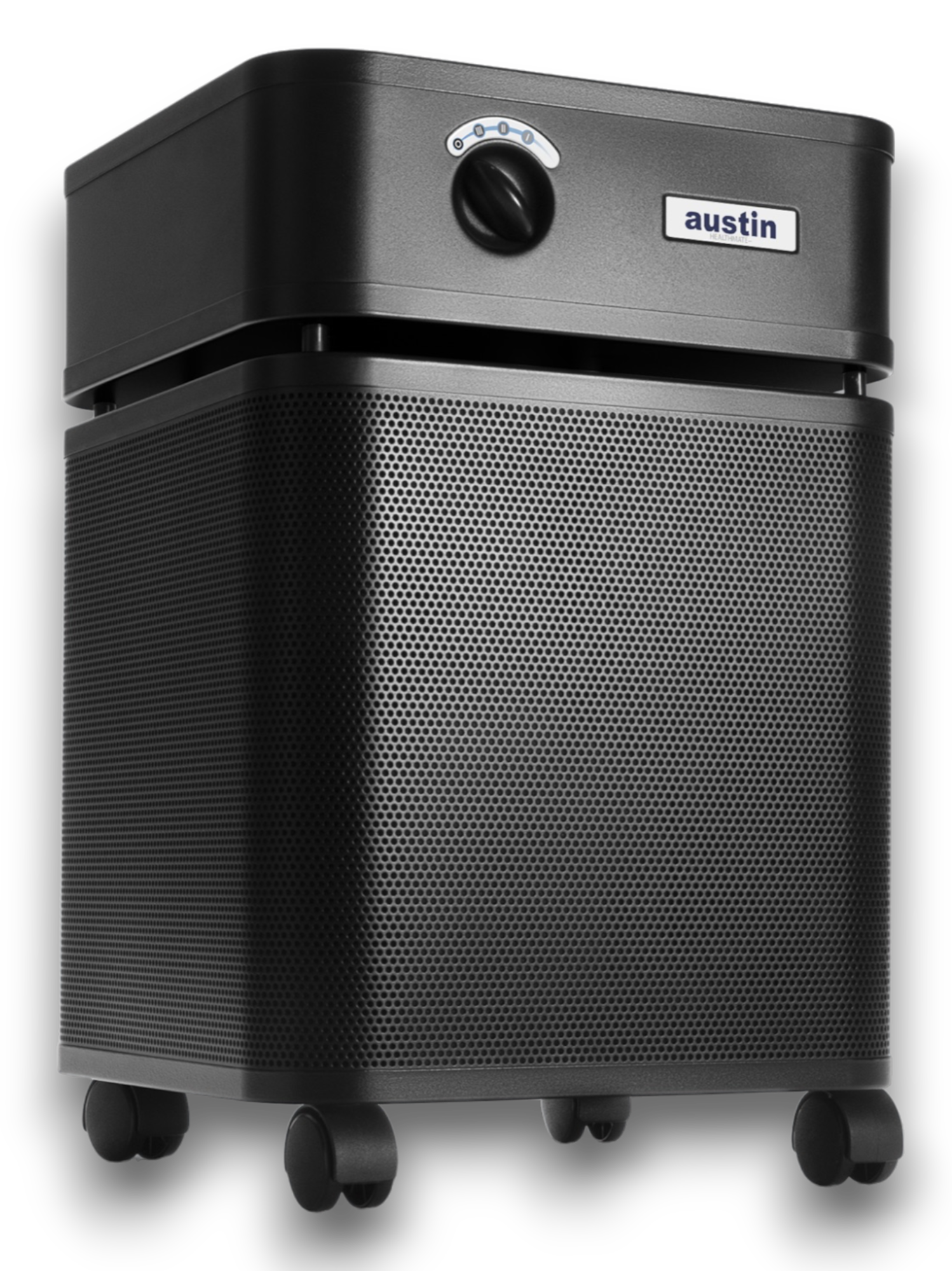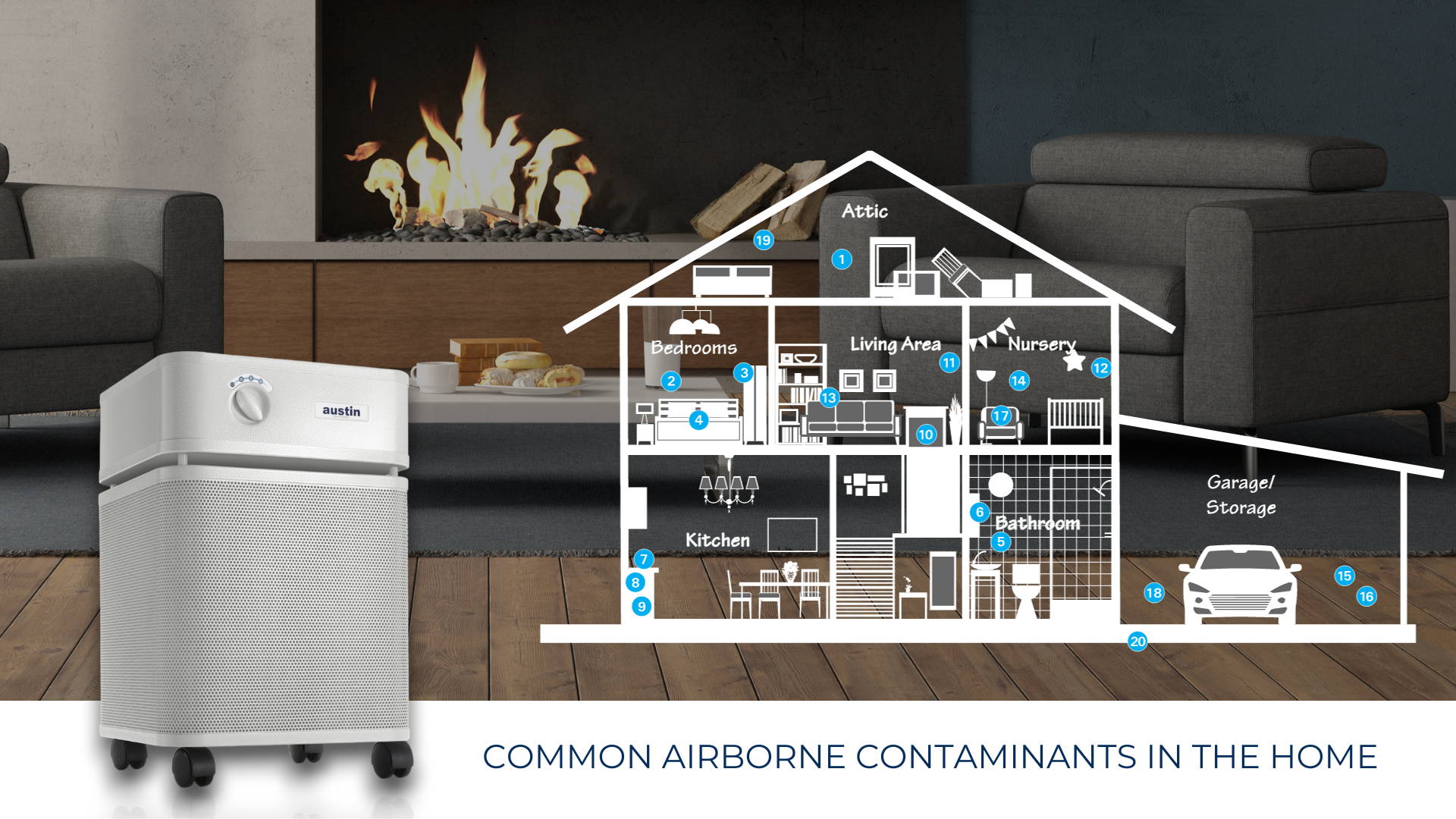Elevate your home's air quality and shield yourself from harmful chemicals, gases, and VOCs with the Austin Air HealthMate®Plus
Cleaning supplies, furnishings, paint, and floor materials can release harmful chemicals, gases, and VOCs into your surroundings. These emissions may be scentless or hidden by more agreeable smells, leading to allergic reactions and worsening of pre-existing health issues. Certain VOCs, like formaldehyde, are recognized as cancer-causing agents.

The Austin Air HealthMate® Plus removes the widest range of chemicals, gases, and VOCs in your home

1. Fiberglass particles in insulation can pose more health risks than asbestos, which may be present in old houses.
2. Pressed wood in furniture and flooring is made using formaldehyde, which can be emitted as a gas.
3. Dry cleaning uses volatile organic solvents, including harmful substances like toluenes and PERC.
4. Dust mites: Their waste and body fragments are allergens, especially problematic in sleeping areas.
5. Lead is present in some old paints and plumbing systems.
6. Personal care aerosols emit organic gases, with some being potential carcinogens.
7. Gas stoves produce combustion by-products like nitrogen dioxide.
8. Household cleaning supplies: Many have harmful volatile components.
9. Pesticides contain highly toxic chemicals that can pollute indoor air.
10. Burning wood: Fireplaces and wood stoves can release ash, harmful tars, and gases such as carbon monoxide and nitrogen oxides.
11. Wall coverings: Some wallpapers release VOCs, and wood panels can be made with formaldehyde.
12. Curtains: Fabrics treated with formaldehyde can gather dust in their folds.
13. Tobacco smoking: It has 43 known carcinogens and poses risks to non-smokers, especially young ones.
14. Carpets can release formaldehyde and accumulate dust, mite debris, and pet dander.
15. Paints and solvents are known for emitting a range of volatile chemicals.
16. Fuel storage: Keeping gasoline, kerosene, and similar fuels can result in volatile chemical emissions in the home.
17. Pet-related allergens: Animal fur and skin particles are prevalent allergens.
18. Car emissions: Fumes, primarily carbon monoxide, can enter homes from garages or nearby roads and accumulate in the body over time.
19. Asbestos: Its fibers can embed in lung tissues, leading to diseases like lung cancer and emphysema.
20. Radon: A naturally occurring radioactive gas from underground uranium deposits linked to lung cancer risks.
